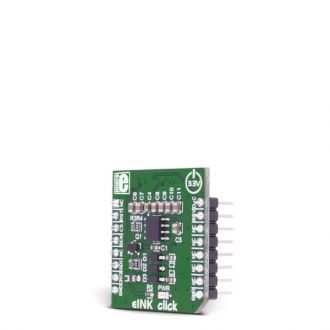
We strongly encourage users to use Package manager for sharing their code on Libstock website, because it boosts your efficiency and leaves the end user with no room for error. [more info]

Rating:
Author: MIKROE
Last Updated: 2018-05-17
Package Version: 1.0.0.1
mikroSDK Library: 1.0.0.0
Category: Electronic Paper Display
Downloaded: 8560 times
Not followed.
License: MIT license
eINK click is an adapter for connecting eINK displays, with a 24pin ribbon cable. The eINK display sold with the click can retain the image even when the power is off. The click is designed to run on a 3.3V power supply.
Do you want to subscribe in order to receive notifications regarding "eINK click" changes.
Do you want to unsubscribe in order to stop receiving notifications regarding "eINK click" changes.
Do you want to report abuse regarding "eINK click".


Library Description
The library covers all functionalities of EPA20-A eINK display.
Key functions:
Examples Description
The application is composed of three sections:
void applicationTask()
{
eink_fill_screen( _EINK_COLOR_WHITE );
eink_set_font( &guiFont_Exo_2_Condensed21x32_Regular[0],
_EINK_COLOR_BLACK, _FO_HORIZONTAL );
eink_text( &_eINK_Text[0], 14, 50 );
delay_ms( 3000 );
eink_fill_screen( _EINK_COLOR_BLACK );
eink_set_font( &guiFont_Exo_2_Condensed21x32_Regular[0],
_EINK_COLOR_WHITE, _FO_HORIZONTAL );
eink_text( &_eINK_Text[0], 14, 50 );
Delay_ms( 3000 );
eink_image_bmp( &_mikroe_bmp[0] );
Delay_ms( 3000 );
}
The example carries bmp image converted to an array using Visual TFT.
Other mikroE Libraries used in the example:
Additional notes and information
Depending on the development board you are using, you may need USB UART click, USB UART 2 click or RS232 click to connect to your PC, for development systems with no UART to USB interface available on the board. The terminal available in all MikroElektronika compilers, or any other terminal application of your choice, can be used to read the message.